As much as we want them to be, ski boots are not and can not be a one-time investment. Yes, they do cost a chunk! But just like you need to refresh your wardrobe every once in a while, there is a time limit on your ski boots too.
And if you’re thinking of “ways you can extend the life of your new boots,”…that’s doable! But even the finest rules in the book won’t be able to put another year on your current boots. There’s a ticking timer on your ski equipment that will buzz at some point.
But till then, you can extend your knowledge of how long ski boots last.
When Should You Replace Your Ski Boots?

Following are the signs that can tell you when it’s time to replace your old pair of performance boots.
When They Get Too Flexible
Ski boots are supposed to be accommodating and comfortable enough to move your toes easily. However, there comes a time when even they get too comfortable.
You know it is time to replace your ski boots when the boot that used to fit snugly and perfectly begins to feel loose and baggy around certain areas.
Advanced skiers are known to wear the most well-fitted boots with little to no extra space, just enough area in the boot to feel comfy and not cramped. However, beginners learning to ski and intermediate skiers experience a lot more gaps and roominess; therefore, their boots are prone to widen more quickly.
When The Shell Gets Damaged
Damaged ski boot shells are the most visible signs that you need to buy new ski boots. Any sort of cracks or fissures on the shell construction could lead to hazardous injuries and accidents if not attended to immediately.
To ensure 100% safety, conduct a shell check on your ski boots every time before you set off riding. Even the slightest of cracks should send you running shopping for new ski boots.
When The Fit Game Declines
Your ski boot liners are important in determining how well your ski boots fit. When these liners become flat, compressed, and out of shape due to regular use, you are bound to feel like your ski boots are wider than usual.
Liners disintegrating mean your boots no longer fit as well as they used to, so now’s the time to invest in a new pair. Poorly fitted boots are bound to result in chronic foot pain and feel uncomfortable.
When The Toes & Heels Wear and Tear

Since most of your pressure when riding during a ski day is applied on the toe parts and heel area, those are the spots that will disintegrate the fastest.
However, there comes a time when these areas become so deeply indented and misshapen that they can no longer provide good shape and support for your toes and heels.
Why Ski Boots Wear Out
Well, how you want this question answered depends on YOUR subsequent answers to the following questions.
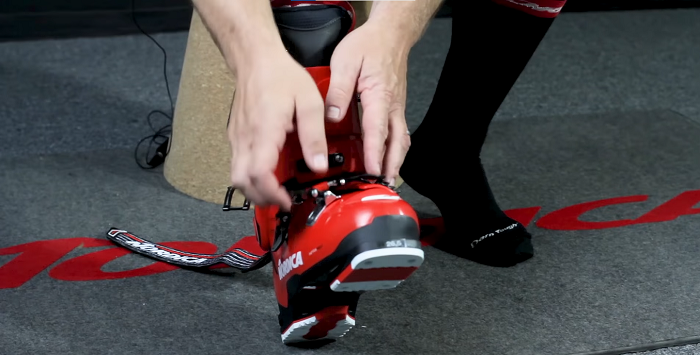
How Old Are Your Boots?
Ski boots are like last night’s pizza leftovers. They won’t last forever!
If you find yourself holding on to the same pair of ski boots for more than 3-4 seasons…the wear and tear at some point build up and start aging the ski boot faster. Once the boot’s different components start to disintegrate, the process just speeds up as you go.
How Well Do You Take Care of Your Boots?
Every pair of ski boots come with a specific list of maintenance instructions from the manufacturers. If you follow that to the last dot, you’re doing it all right. However, extra precautions never hurt anyone.
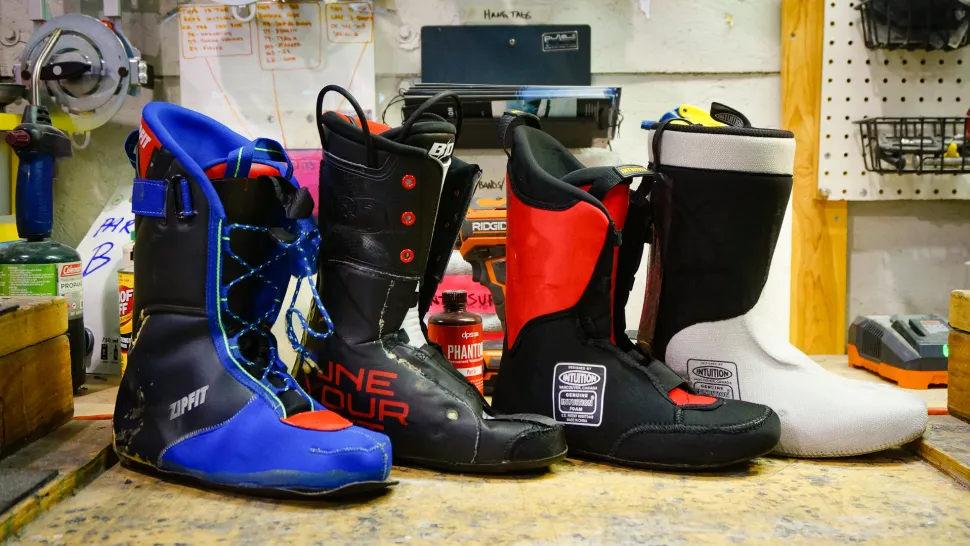
So my little piece of advice for those living in areas with internal heating is do not store your ski boots in a heated room. But if you must, remember to get your modern ski boots regularly serviced by an expert and avoid sunlight.
How Often Do You Hit the Trails?
If you frequent the skiing trails once or twice every year, your ski boots can easily give you up to 5 years of amazing rides.
Do You Use Heat Moldable Insoles?
The advantage of using heat moldable insoles for your ski boots is you get a custom and precise fit for your feet. It also aids in the ability to gain a better and stronger grip over your skies and control them over the terrains in a finer manner. Oh, and you also gain improved balance and performance.
How Intensely Do You Ski?
This is directly in relation to your expertise level. If you are used to charging hard lines and executing little stunts here and there, that will undeniably shorten the lifespan of your boots.
That is usually because these tricks and stunts directly affect the flex livelihood (flexibility) of your ski boot which in turn directly impacts the lifespan of your boot. If you use your ski boots to simply slide, ski, and make “normal” turns on the snow, your boots last longer by default.
How Old Are Your Liners?
Ski boot liners tend to compress into themselves as you regularly use them. Liners in ski boots make all the difference in providing padding and support for your foot shape.
So naturally, when these are eroded, compressed, or not in their best shape, the plastic shell of the ski boot is bound to receive the brunt of all external force.
What Are the External Conditions and Temperatures You Ski In?
Skiing in a warmer climate or on wet snow negatively impacts the lifespan of your boot. The excess moisture and dampness in the atmosphere can damage the stitching and glued seams which could literally lead to your ski boot falling apart.
Skiing in extreme climates warrants a regular checkup of your ski boot from an experienced technician.
Key Elements Affecting Ski Boot Performance
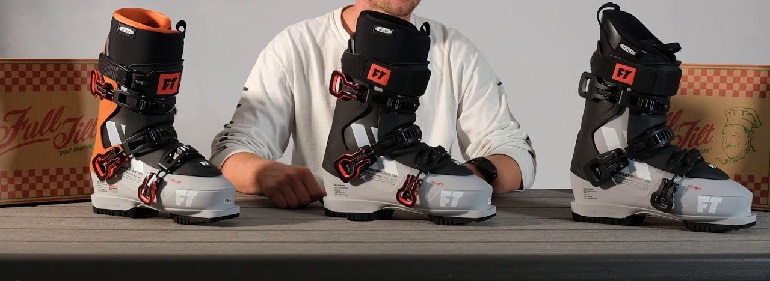
Let’s start with the most obvious and impactful reason.
Climate is the #1 affecting factor that can lead to the gradual (or sometimes instantaneous) wear down of your ski boots.
Ski boots generally last for a pretty good duration but altering the exterior temperature drastically reduces their lifespan. For example, transferring them from a warm temperature (like the inside of your home) to the snowy mountains.
Using the ski boots for a purpose other than what they were intended for, such as walking. I, myself, am extensively guilty of this specific habit as I tend to walk around in them for a pretty long while after I’m done skiing. This reduces their lifespan, maybe not drastically but to a major extent.
Exposure to ultraviolet light also causes substantial and rapid disintegration of the ski technology. The shells, in particular, can become brittle and fragile over time. On the other hand, the liners could be subject to sun rot so try your best to keep them out of direct sunlight.
Failure to effectively and fully dry out the shoe inside out is another reason your ski boots are expiring too early.
After every use, you should pay extra attention to your liners as they tend to get wet and require complete and thorough air drying. Emphasis on air drying! Do not even try to blow dry the liners as that could expose them to direct heat leading them to lose their current ski boots fit.
Do Ski Boot Shells Indicate Obvious Symptoms of Deterioration?
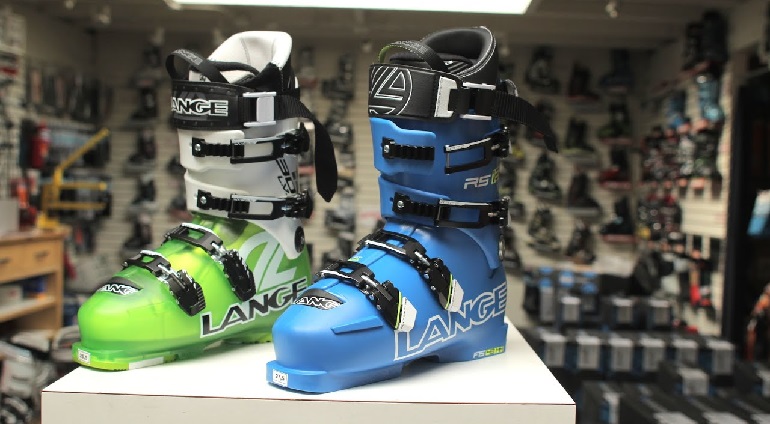
Yes! However, you should not be the person making these observations and judgments. An expert team at a ski shop will only be able to tell you the verdict. But if you can note some of the following points on your boots, then it is probably time to purchase a new pair of ski boots.
Cracked leather in the shells is a deal breaker right away with no hesitation. Unfortunately, there is no possible way to repair that, and your ski boots need to be replaced.
Moreover, if you notice the color of your plastic shells changing, that’s a sign that your boots are too old to last you through another day of skiing, let alone a season. Let go of them…now!
What Should You Do to Take Care of Your Ski Boots?
It is essential to care for your liners first and foremost. After every ride, wash your liners by hand and leave them out to air dry. Or you could use a ski boot dryer paired with a fabric spray to refresh your boots in only a percentage of the time.
Next, pay attention to your boot shells. Naturally, since your liners are getting wet, your shells are bound to get some moisture on them too. Make a habit of wiping down the inside of your shells to reduce the possibility of mold growth.
Remove your ski socks before walking with them on any surface. And yes, I am specifically referring to public areas like the lodge and lobby and the cafeteria of the arena you’re in. Walking there while wearing ski socks can normally transfer dirt and bacteria to your boots, so it’s better to protect them.
When to Replace Ski Boot Liners?
Liners come in many different types and, as a result, have varying lifespans.
Intuition Liners
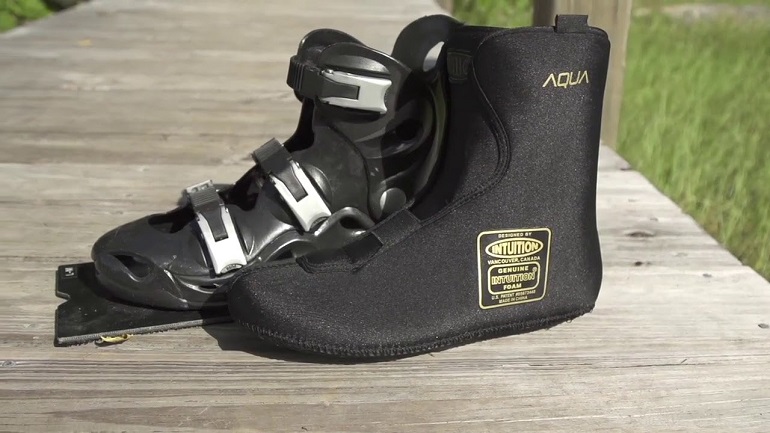
Soft, comfortable, and trustworthy; Intuition liners are the product of the Canadian company that, although winning in every aspect, may not be the finest choice for all types of ski boots. The liners are usually 9mm in thickness, making them inapplicable for some boots.
Nevertheless, if you have managed to fit them into your favorite ski boot, you have some good 100 days on them before they start dwindling.
Zipfit Liners
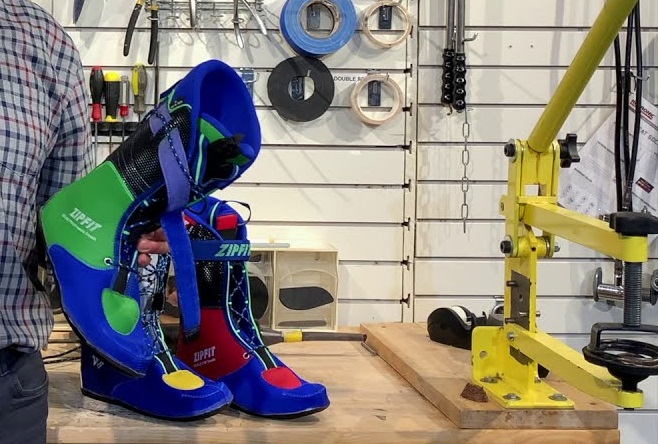
The materials of these liners are a lot more durable and powerful than the aforementioned brand, as they are capable of staying intact for over 300 days on snow. Made of a mix between cork and clay, some users have commented that they have stayed in tip-top new shape for over 400 days too.
Foam Injected Liners
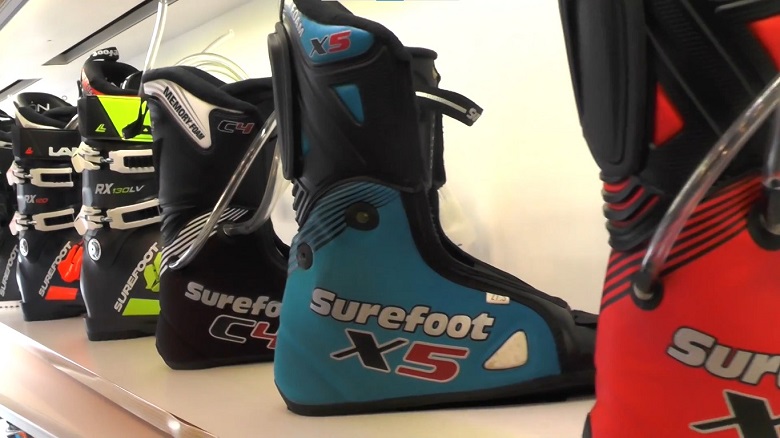
The topmost preferred liners to choose when you buy ski boots, they mold in the shape of your foot most snugly and perfectly. With these liners, you never have to wonder how long do ski boots last as they substantially extend the life of your new pair.
It is said that off-the-shelf foam liners can generally stay with you for up to 5 years.
Ways That You Can Extend the Life of Your Ski Boots
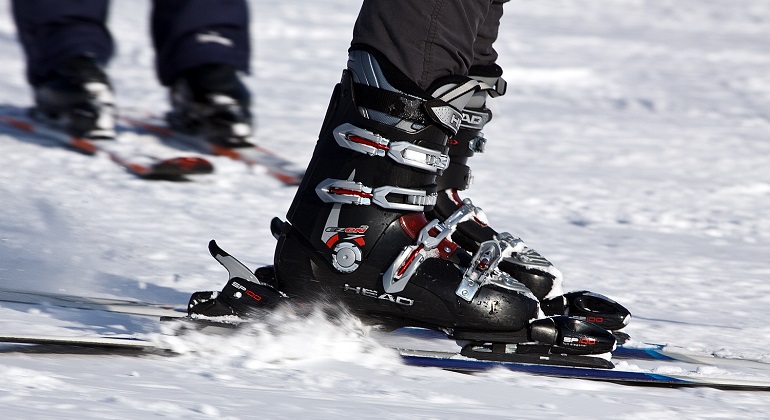
There are a bunch of tips you can incorporate into your skiing lifestyle to help you extend the life of your ski boots. In that way, you never have to sit and ponder how long do ski boots last as you would be making a sound effort to increase their lifespan.
I’d like to start here and make a very clear, standalone point regarding storing your ski boots. If you are carrying away your boots for the season, ensure there isn’t even a speck or atom of moisture remaining on the shell or ski boot liner before you finally pack them away.
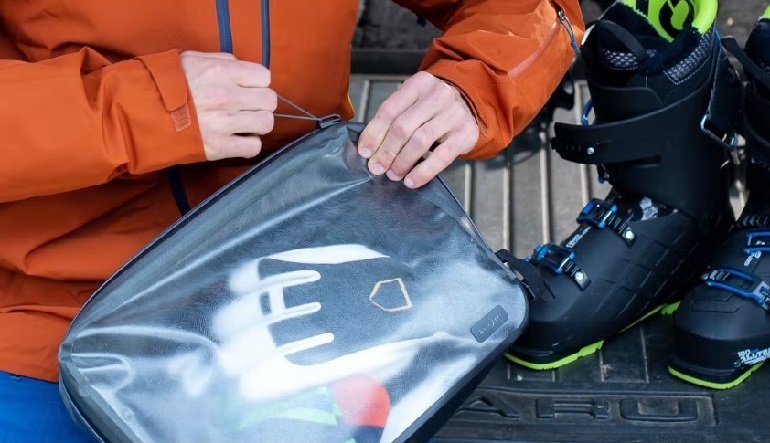
On that note, you also must dry off your boots properly after every use to ensure no dampness turns into mold.
Additionally, when shopping for a pair of ski boots, buying an equally supportive and comfortable pair of ski socks is important. You will be surprised to know just how much they contribute to upkeeping your ski boots.
Lastly, cat tracks or welted soles are an absolute must. They are known to extend the life of your boots while also making it easier to walk around in them (not that you should be walking around, but you get me!)
How Durable Are Skis?
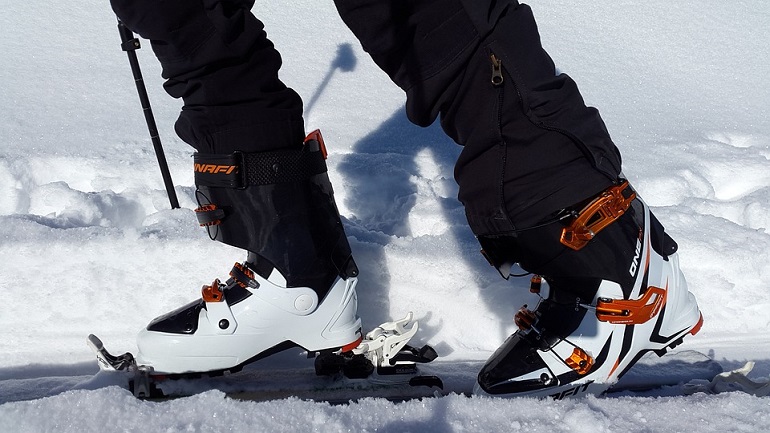
So I’ve been babbling on for quite a while now on how long do ski boots last, and as much as that may be essential, it is also worth knowing the lifespan of your skis. Manufactured from wood and plastic, they aren’t exactly waterproof, so you have to pay close attention to them.
Any advanced skier can tell you that around 120 days of full use is adequate to wear down any good pair of skis. Where most people replace their skis every 8 years, I like to replace older skis every 6 years. If you allow the years to wear down your skis more, your ski performance will also decline with it.
Therefore, I like to renew them every 6 years to ensure my ski performance stays optimum and I stay well out of the way of any injury or accident.
Final Thoughts
Your ski boots are the most important part of your skiing gear, which is why you need to take good care of them. Whatever changes and tips you can incorporate into your routine to extend their life…do that with full diligence. Be it buying additional gear like a new liner, cat tracks, or replaceable heels.
And when it is time to bid farewell to your favorite pair of old boots, don’t hesitate to do that, either. Sometimes letting go is easier than holding on.
0 Comments